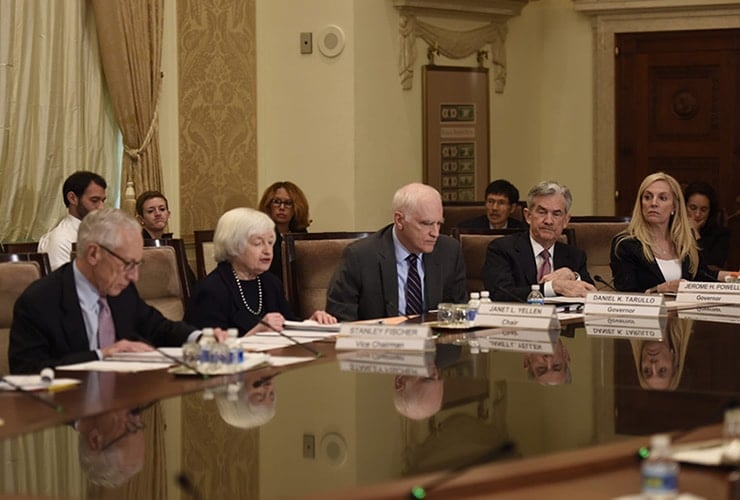Dollar Cycles in Response to ‘Mixed Bag’ of Fed Minutes

The Dollar Index, a composite of the Dollar versus a basket of currencies, traded higher, and then lower following the release of the Federal Open Market Committee (FOMC) meeting minutes on Wednesday, due to the central bank's mixed messages.
There was an overall consensus of agreement that the Fed should continue raising rates “gradually”.
Whilst it was noted that inflation remained low, at only 1.4% according to the Fed’s preferred metric, this was viewed as a temporary phenomenon and prices would eventually rise to the Fed’s 2.0% target.
“Fed officials indicated a determination to continue raising rates even with muted inflation levels, which they considered to be temporary and likely to rise over the long run to a targeted level of 2 percent, according to a summary from the June meeting of the policymaking Federal Open Market Committee,” said CNBC’s Jeff Cox.
If anything, more members were concerned about symptoms of continued ‘looseness’ in the economy, including continued low bond yields, a rising stock market and falling unemployment, which were seen as a financial stability risk, because they could lead to a crash.
“On stock prices, FOMC members "suggested that increased risk tolerance among investors might be contributing to elevated asset prices more broadly; a few participants expressed concern that subdued market volatility, coupled with a low equity premium, could lead to a buildup of risks to financial stability.”,” said Cox.
At only 4.3% the unemployment rate has fallen well below the 4.7% defined as ‘full-employment’ and also poses a financial stability risk.
Nordea bank noted that the level was now well below NAIRU – the level at which the labour market becomes so tight it must lead to a rise in wages and levels of inflations.
“Overall, the Fed seems to see the risks associated with undershooting the NAIRU as greater than those of low inflation,” said Nordea’s Piet Philip Christiansen.
Much of the minutes covered the debate about why the economy was not tightening in response to the Fed’s rate hikes.
Low Bond yields, officials reasoned, might be the product of “sluggish longer-term growth, or the continued reinvestment of principle from the Fed’s massive 4.5 trillion bond fund, built up when it practiced quantitative easing following the financial crisis.
The Fed still reinvests principle from bonds that it holds maturing.
It ploughs the money back into buying new bonds and this continues to keep bond prices artificially elevated – and yields which move inversely to prices - artificially low.
Balance Sheet Banter
The minutes revealed much communication on the topic of when the Fed might consider reducing its balance sheet bond ‘mountain’, which also happens to be a hot topic for markets.
There was no consensus, however, on a specific time of date, with some officials saying the ‘run off’ of principle, should begin in a couple of months’ time and others that it should start at the end of the year.
“Officials still haven’t agreed on when to start the balance sheet unwind. As a result, the probability of an announced start date at the 25-26 July FOMC meeting is slim,” remarked Nordea’s Christiansen, who saw the start of the run-off as likely to be data dependent.
“Upcoming data on inflation and unemployment will likely be decisive.”
Overall he stuck with Nordea’s official forecast that the Fed would hike rates again in September and start cutting the balancing sheet down in December.
“But we see a fairly high probability that the two policy moves come in reverse order,” he added.




